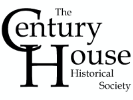Another fascinating story is this railroad which at one time was very busy. It was called the Wallkill Valley Railroad and at one time it was destined to become the main line between Canada, Albany, and New York, with the terminus at Hoboken. There was a railroad-building race going on with the Vanderbilts putting together the NewYork Central Railroad on the east side of the Hudson River and the Wallkill Valley Railroad building on the west side, starting from the south. They came to the gorge of the Rondout Creek, here in Rosendale, and had to build a huge bridge, and that’s where the construction stalled. And the Vanderbilt’s won the race to Albany and the New York Central became the main line.
But when I came here with my father, mother, and sister, in 1928, this was a very busy railroad. Commuter traffic from the Wallkill Valley, south of here, found employment in Kingston which was a center of the needle trades: dresses, shirts, and pajamas. Manhattan Shirts were made in Kingston as well as Jonathan Logan fashions and Barclay knitwear, and a silk mill. There was also cigar-making, a small manufacturer of automobiles, and two or three metal foundries. Everyone gravitated to Kingston for employment. The kids even went to high school by train. This railroad carried Railway Express, a mail car, and a milk car. A freight train would come down every morning (at about 10:00 at Binnewater), stopping at every station and unloading lumber, cement and various materials that people would have ordered. The farmers also shipped their eggs to market via Railway Express. But the big money maker for the railroad was anthracite coal from the Pennsylvania coal fields on the way to northern New York, New England, and Canada. Every single day a huge, long trainload of coal cars would come lumbering past.
The trestle over the Rondout gorge in Rosendale has a curve in it and, coming across in this direction, the trains had to go very slowly. They were pulled by two coal-fired locomotives, double-headers, small compared to today’s diesel locomotives. That trestle is also at the bottom of a railroad hill and we’re at the top. It doesn’t look like much of a hill but, in fact, there’s quite an increase in elevation. When those locomotives came to this side of the bridge they had to get up a head of steam, get some speed up, so they could make the hill. Invariably they would stall; the freight train would be so heavy and so long that it would stall. Right opposite the main entrance to the Hotel they’d come to a grinding halt!
There were two ways they could overcome this difficulty. The first way was the easiest but, invariably, it would fail. The brakeman in the caboose would set the brakes and the train would back up, compressing all the couplings. Bang! Bang! Bang! Bang! Bang! It made an awful racket! Then, at a given signal, both lead locomotives would go full throttle ahead. The big drive wheels would grind on the rails and the smoke and soot would shoot out of the chimneys. Sparks would fly and the forest would catch on fire. There was a lot of excitement! And as those couplings stretched out there was another big racket. Sometimes they got enough momentum that way to make the hill but usually it failed. In the meantime, our crossing was blocked. To get from one side to the other we had to crawl underneath the cars or else drive down to Binnewater and come back on the other side. It was a little bit of a handicap but, at the same time, it was exciting.
When they couldn’t make it after two tries they tried another method. They’d split the train in half and pull the front half up to the top of the hill, just past the tennis courts and parked it on a siding there. Then they’d back up, pull up the second half, hitch the two halves back together, and head on to Kingston. This was almost a daily occurrence.
